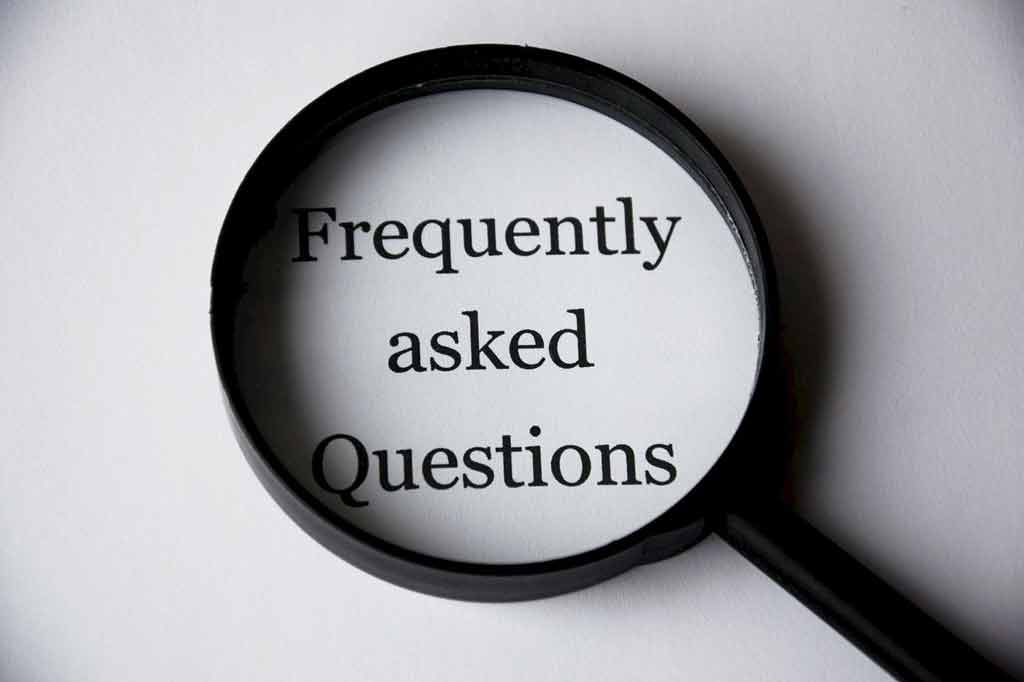 The U.S. Department of Labor (DOL) has issued frequently asked questions (FAQs) that address which employers are covered by the paid leave requirements of the Families First Coronavirus Response Act (FFCRA). The FFCRA requires covered employers to provide their employees with paid sick leave and expanded family and medical leave for specified reasons related to COVID-19. The leave requirements apply to employers with fewer than 500 employees; the FAQs explain how employers should calculate this number and which government employers are covered. Here are the details about the guidance for employers covered by FFCRA paid leave.
The U.S. Department of Labor (DOL) has issued frequently asked questions (FAQs) that address which employers are covered by the paid leave requirements of the Families First Coronavirus Response Act (FFCRA). The FFCRA requires covered employers to provide their employees with paid sick leave and expanded family and medical leave for specified reasons related to COVID-19. The leave requirements apply to employers with fewer than 500 employees; the FAQs explain how employers should calculate this number and which government employers are covered. Here are the details about the guidance for employers covered by FFCRA paid leave.
The DOL’s FAQs address:
- Counting full-time, part-time and temporary employees, as well as day laborers
- Whether to count independent contractors
- Joint employers under the Fair Labor Standards Act (FLSA)
- Integrated employers under the federal Family and Medical Leave Act (FMLA)
- Government employers
The DOL guidance also explains exemptions in the FFCRA for:
- Small businesses with fewer than 50 employees; and
- Employees who are health care providers or first responders
In FAQs issued about the FFCRA, the DOL has provided guidance for employers to follow in determining whether they are covered by the emergency paid sick leave and emergency family and medical leave expansion requirements of the law. Both leave mandates apply to employers with fewer than 500 employees. Both leave requirements allow exemptions for certain employers with fewer than 50 employees and for employees who are health care providers or first responders. The FFCRA goes into effect on April 1, 2020.
Calculating the 500-Employee Threshold
The DOL FAQs explain that under the FFCRA, an employer has fewer than 500 employees if, at the time the employee’s leave is to be taken, it employs fewer than 500 full- and part-time employees within the United States, which includes any state, the District of Columbia, or any U.S. territory or possession. In making this determination, employers should include employees on leave; temporary employees who are jointly employed by them and another employer (regardless of whether the jointly employed employees are maintained on only their or another employer’s payroll); and day laborers supplied by a temporary agency (regardless of whether the employer is the temporary agency or the client firm if there is a continuing employment relationship).
Independent Contractors
Workers who are independent contractors under the FLSA, rather than employees, are not considered employees for purposes of the 500-employee threshold, according to the DOL guidance.
Joint and Integrated Employers
The DOL guidance states that typically, a corporation (including its separate establishments or divisions) is considered to be a single employer, and its employees must each be counted towards the 500-employee threshold. Where a corporation has an ownership interest in another corporation, the two corporations are separate employers unless they are joint employers under the FLSA with respect to certain employees. If two entities are found to be joint employers, all of their common employees must be counted in determining whether paid sick leave must be provided under the Emergency Paid Sick Leave Act, and expanded family and medical leave must be provided under the Emergency Family and Medical Leave Expansion Act.
According to the DOL FAQs, in general, two or more entities are separate employers unless they meet the integrated employer test under the Family and Medical Leave Act of 1993 (FMLA). If two entities are an integrated employer under the FMLA, then employees of all entities making up the integrated employer will be counted in determining employer coverage for purposes of paid sick leave under the Emergency Paid Sick Leave Act and expanded family and medical leave under the Emergency Family and Medical Leave Expansion Act.
Public Employers
Paid Sick Leave
In general, according to the DOL, public agencies and other units of government are covered by the emergency paid sick leave requirements of FFCRA, including the U.S. government and the government of a state, the District of Columbia, a U.S. territory or possession, a city, a municipality, a township, a county, a parish or a similar entity. However, the DOL notes that the U.S. Office of Management and Budget (OMB) has the authority to exclude some categories of U.S. government executive branch employees from taking certain kinds of paid sick leave.
Family and Medical Leave
According to the DOL FAQs, in general, non-federal public agencies are covered by the expanded FMLA leave requirements. For example, state governments, the District of Columbia, U.S. territories and possessions, cities, municipalities, townships, counties, parishes or similar entities would be covered.
However, most federal government agencies are not covered by the FMLA expansion, for the reason that most federal employees are covered by Title I of the FMLA, while the FFCRA amended only Title II of the FMLA. In addition, as with paid sick leave, the OMB has the authority to exclude some categories of U.S. government executive branch employees from expanded and family medical leave.
The DOL FAQs indicate that additional FAQs about public sector employers will be forthcoming.
Exemptions
Health Care Providers
The FFCRA allows employers—including government employers—to exempt employees who are health care providers from its leave provisions. For the purposes of this exemption, a health care provider is anyone employed at any doctor’s office; hospital; health care center; clinic; post-secondary educational institution offering health care instruction; medical school; local health department or agency; nursing facility; retirement facility; nursing home; home health care provider; any facility that performs laboratory or medical testing; pharmacy; or any similar institution, employer or entity. This includes any similar permanent or temporary institution, facility, location or site where medical services are provided.
This definition includes any individual employed by an entity that contracts with any of the above institutions, employers or entities to provide services or maintain the operation of the facility. This also includes anyone employed by any entity that provides medical services, produces medical products or is otherwise involved in the making of COVID-19-related medical equipment, tests, drugs, vaccines, diagnostic vehicles or treatments. This also includes any individual whom the highest official of a state or territory, including the District of Columbia, determines is a health care provider necessary for that state’s or territory’s—or the District of Columbia’s—response to COVID-19.
Emergency Responders
The FFCRA also allows employers—including government employers—to exempt employees who are emergency responders from its leave provisions. For this purpose, according to the DOL guidance, an emergency responder is an employee who is necessary for the provision of transport, care, health care, comfort and nutrition of patients, or whose services are otherwise needed to limit the spread of COVID-19.
This includes but is not limited to the military or national guard, law enforcement officers, correctional institution personnel, firefighters, emergency medical services personnel, physicians, nurses, public health personnel, emergency medical technicians, paramedics, emergency management personnel, 911 operators, public works personnel, and persons with skills or training in operating specialized equipment or other skills needed to provide aid in a declared emergency, as well as individuals who work for such facilities employing these individuals and whose work is necessary to maintain the operation of the facility. This also includes any individual whom the highest official of a state or territory, including the District of Columbia, determines is an emergency responder necessary for that state’s or territory’s—or the District of Columbia’s—response to COVID-19.
To minimize the spread of the virus associated with COVID-19, the DOL encourages employers to be judicious when using these definitions to exempt health care providers and emergency responders from the provisions of the FFCRA.
Small Businesses (Fewer than 50 Employees)
According to the DOL Q&As, employers, including religious or nonprofit organizations, with fewer than 50 employees (small businesses) are exempt from providing (a) paid sick leave due to school or place of care closures or child care provider unavailability for COVID-19 related reasons and (b) expanded family and medical leave due to school or place of care closures or child care provider unavailability for COVID-19-related reasons when doing so would jeopardize the viability of the small business as a going concern. A small business may claim this exemption if an authorized officer of the business has determined that:
- The provision of paid sick leave or expanded family and medical leave would result in the small business’s expenses and financial obligations exceeding available business revenues and cause the small business to cease operating at a minimal capacity;
- The absence of the employee or employees requesting paid sick leave or expanded family and medical leave would entail a substantial risk to the financial health or operational capabilities of the small business because of their specialized skills, knowledge of the business or responsibilities; or
- There are not sufficient workers who are able, willing and qualified, and who will be available at the time and place needed, to perform the labor or services provided by the employee or employees requesting paid sick leave or expanded family and medical leave, and this labor or these services are needed for the small business to operate at a minimal capacity.
The DOL encourages employers and employees to collaborate to reach the best solution for maintaining the business and ensuring employee safety.
To elect the small business exemption, the DOL Q&As tell employers to document why their business meets the criteria set forth by the DOL, which will be addressed in more detail in forthcoming regulations.
©2020 Zywave, Inc. All rights reserved.

